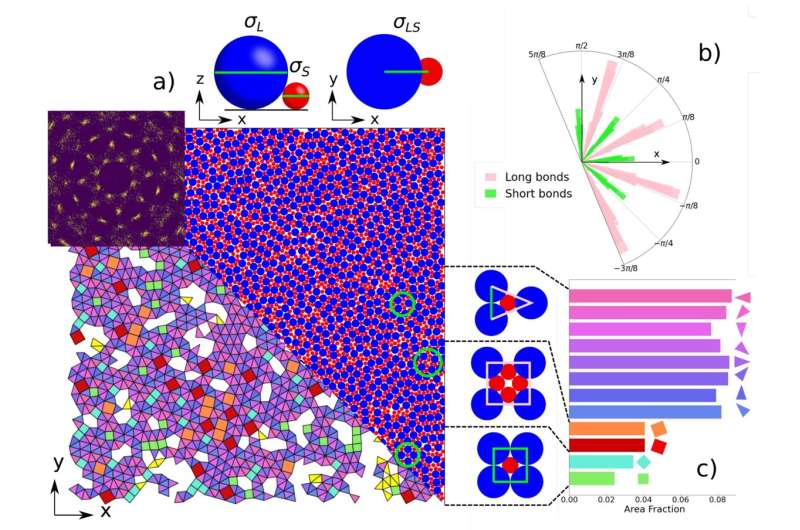July 19, 2023 report
This article has been reviewed according to Science X's editorial process and policies. Editors have highlighted the following attributes while ensuring the content's credibility:
fact-checked
preprint
trusted source
proofread
Spontaneous quasi-crystal self-assembly observed using tiny vibrating magnetic spheres

A team of physicists at Université Paris-Saclay has, for the first time, observed spontaneous quasi-crystal self-assembly. The observation occurred during an experiment they were conducting with tiny vibrating magnetic spheres. The team has written a paper describing their experiment and have posted it on the arXiv preprint server while they await peer review.
For many years, the existence of quasi-crystals was debated among physicists, with most arguing against them. But then, back in 1982 D. Shechtman and colleagues studying a sample of an alloy made of manganese and aluminum found it had characteristics that fit with the theorized proposed quasi-crystal—a diffraction pattern with Bragg peaks that were symmetrical—eliminating the possibility of it being a crystal.
Since that time, many examples of quasi-crystals have been found. They are now defined as aperiodic structures with some crystallographic properties. They have been seen in the lab, in the field, and even in space but until this recent work, they had never been seen forming spontaneously.
The work by the research team started when they began tossing around the idea of two groups of spheres related by ratio size as possible building blocks for a quasi-crystal and then took sides regarding its viability—they even made bets with some suggesting the idea would never work.
To prove one side right and the other wrong, the group developed a way to test the idea. First, they used computer simulations to find the right size spheres. Next, they obtained two groups of spheres, both of which were made of metal. One group had a diameter of 2.4 millimeters, the other 1.2 mm. They than placed all 3,840 spheres in a flat shallow pan and attached it to a device that would provide constant vibration for a long period of time. A recording microscope was fixed in place overhead. The pan was vibrated at 120 times per second for approximately one week.
After the jostling, the researchers looked at the arrangement of the spheres and found that they had arranged themselves in certain, non-repeating patterns which conformed to theory—the spheres had become a new kind of quasi-crystal. What is still not clear is which team members won the bet and what if anything did they receive as payout.
More information: Andrea Plati et al, Quasi-crystalline order in vibrated granular matter, arXiv (2023). DOI: 10.48550/arxiv.2307.01643
Journal information: arXiv
© 2023 Science X Network




















